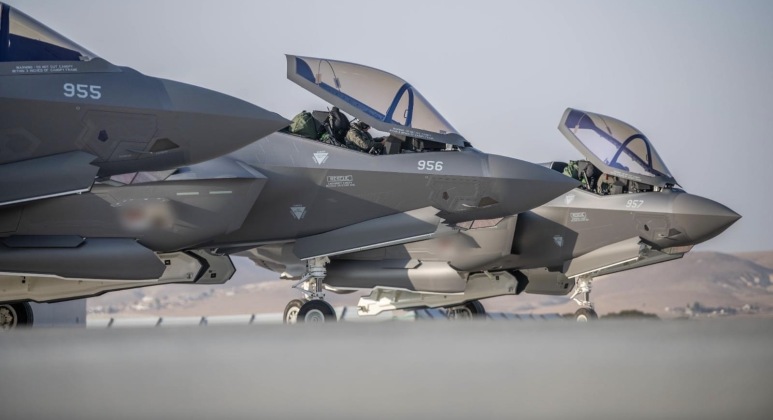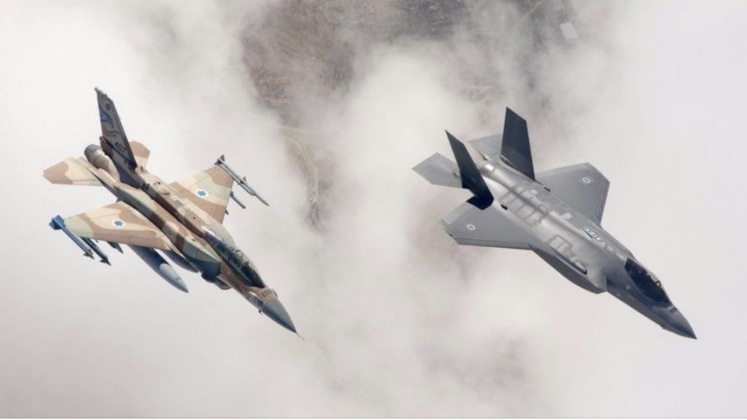Horse_Rider
BANNED

- Joined
- Nov 24, 2022
- Messages
- 550
- Reaction score
- 1
- Country
- Location
As Iran Prepares to Receive Su-35s – Israel Grounds Its Top Fighters: F-35 Issues Widespread From Korea to Texas
December 29, 2022/0 Comments/in Defence system /The Israeli Air Force grounded 11 of its F-35A fighter jets on December 25, following multiple incidents with the class throughout the year. The decision has further increased already prevalent concerns regarding the aircraft’s ability to counter near term challenges to Israeli security – and by extension threats to over a dozen other F-35 operators across the world. “From the findings and the information transmitted, it was found that these planes require a dedicated inspection in order to rule out the possibility of a repeated malfunction in the Israeli system,” an Israeli military spokesman announced regarding the recent decision, leaving some uncertainty as to whether this could affect the wider Israeli F-35 fleet which numbered 30 aircraft at the beginning of the year. Reports further elaborated that an initial review showed the jets may have similar defects to those that led to a crash in Texas three days prior, although the fighter involved was an F-35B with vertical landing capabilities.
Israel grounded its F-35s earlier in the year in July after an ejection-seat malfunction was discovered – at a time when the U.S. Military also grounded its F-35 fleet. Other clients have also faced difficulties with their F-35 fleets, with revelations in October that South Korea’s National Assembly’s National Defence Committee had found the country’s F-35s suffered from 234 flaws over 18 months from January 2021 to June 2022. These included 172 ‘non-flying status’ and 62 ‘cannot perform specific mission status’ cases, with the 117 flightless and 45 mission specific failures that occurred in 2021 seeing little improvement in the first half of 2022. The F-35’s suitability for combat in the event of war on the Korean Peninsula was seriously questioned by officials at the time, with the fighter class still considered far from ready for high intensity combat despite having made its first flight 16 years ago in 2006.

The F-35 is the only Western post fourth generation fighter in production worldwide, with it and the Chinese J-20 being the only fifth generation production fighters fielded at squadron level strength. The aircraft’s potential to comfortably surpass other existing Western fighter classes has led to widespread foreign interest despite issues with its performance, although the Pentagon has increasingly indicated that domestic orders are likely to face deep cuts. A major issue with the F-35 which is not expected to be resolved are its high operational costs, which limit its viability for widespread service as a replacement for F-16 and F-18 units. Unlike its Chinese rival the J-20, which is a heavyweight twin engine fighter designed for air superiority missions and to serve in elite units, the F-35 is a relatively light single engine aircraft which was intended to be fielded in large numbers. A heavyweight fifth generation fighter equivalent to the J-20 was developed in the United States under the F-22 program, although serious and wide ranging issues with the fighter led to orders to terminate production being given less than four years after it entered service – with those few F-22s built set to begin being retired in 2023 despite flying for only a small fraction of their service lives. Although Israel was previously expected to acquire the F-22, alongside Japan and possibly other clients such as Australia, the fighter was never viable for export due to its tremendous maintenance needs which, combined with delays to F-35 development, has left clients without viable fifth generation fleets.

The urgency of fielding fifth generation fighters has been low particularly in the Middle East, as unlike during the 1970s when fourth generation fighters began to be fielded there is little prospect today of Israel’s potential adversaries deploying cutting edge fighters. This is a result of both regional countries’ their economic situations and of post Soviet Russia’s struggles moving its fighter industry into the fifth generation. Nevertheless, Israel’s primary regional adversary Iran is reportedly set to receive Russian ‘4++ generation’ Su-35 fighters in 2023 which are considerably more sophisticated than Israel’s older F-16s and F-15s, making improvements to the reliability of the F-35 fleet appear particularly important. Although limited in many aspects of their air to air performances, F-35s are well optimised to strike missions which has led the fighters to play a key role in Israeli plans for possible strikes on Iranian nuclear facilities – a scenario frequently rehearsed in exercises involving the stealth jets. The threat of Israeli F-35 strikes is thought to have been a primary reason for Iran’s decision to invest in the Su-35, supplementing its already formidable surface to air missile network and retaliatory missile and drone capabilities with its first foreign sourced 21st century fighter jets. How Iran’s Su-35 purchase could impact future Israeli acquisitions plans remains uncertain, with the possibility having been raised that Israeli could seek its own enhanced fourth generation fighter in the form of the F-15EX to curb reliance on the more problematic F-35.
